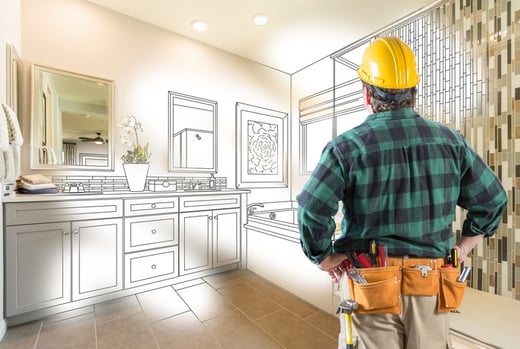 While spring ushered in warmer weather and longer days, kicking off the home improvement season, these are the heady days of summer. The season is hot, and homeowners are looking to start their next project before it ends. To capture as many customers as you can, you need to understand your target audience and the goals, desires, and needs that drive their choices.
While spring ushered in warmer weather and longer days, kicking off the home improvement season, these are the heady days of summer. The season is hot, and homeowners are looking to start their next project before it ends. To capture as many customers as you can, you need to understand your target audience and the goals, desires, and needs that drive their choices.
Fortunately, the Home Projects Council released a set of five personality profiles earlier this year. Based on a survey of 1,140 homeowners who were 21 or older, the council leveraged a scoring algorithm that used insights about current and future projects to compare project experiences and habits. It revealed that while some elements — think price point, the time required, or necessity — are universal factors that influence project planning, the homeowner’s personality plays a key role. The result is what they refer to as “The Big Five.”
Home Improvement Personalities: The Big Five
It’s worth noting that no homeowners fit perfectly into just one category, and you need to balance these insights with your own market research. These profiles simply offer a great place to start considering ways to speak to the real reasons why each homeowner chooses their projects and how they execute them.
The Sensible Improver (39% of Respondents)
Largely consisting of Boomers (53%) and women (53%), this segment consists of seasoned homeowners that balance their personal experience with a fresh perspective. They prefer to do research, and while they’ll do smaller, more manageable projects themselves, they’re likely to turn to contractors to handle more complicated work.
What They Care About or Avoid
Sensible Improvers tend to put others first, so their projects usually enhance or create a warm, welcoming feel — it’s probably why they love painting rooms. They don’t mind decorative flare, but they make smart, informed choices. Large or complicated projects like installing a fence may be intimidating, and they’re more likely to turn to a contractor for these improvements.
How Much They Spend
This segment accounts for less than a third (29%) of home improvement spending among respondents.
The Project Planner (28% of Respondents)
Less than half of this segment is Boomers (49%), but the gender split is an even 50-50. They are both meticulous and thorough, and they prioritize functional improvements over anything cosmetic. They’ll examine the pros and cons of every element of a project before hiring a contractor to ensure the results perfectly align with their needs.
What They Care About or Avoid
Since they’re incredibly detail-oriented, they’ll do everything in their power to avoid problems; it’s also probably why the project they dread is tiling a shower. Their practicality is thoughtful, so while the emphasis is on functionality, they also want the results to look good. Perhaps that’s why they favor landscaping their property — a clean and orderly property with excellent accents and lighting is a joy year round.
How Much They Spend
Project Planners account for less than a quarter (23%) of home improvement spending among respondents.
The Reliable Renovator (15% of Respondents)
While the majority of this segment is male (66%), this profile also represents the largest group of Matures (i.e., age 70 or older), who were one fifth of Reliable Renovators. They’re laid back, which means they often only take on a home improvement project when something requires attention. That being said, they fully asses the project and can alter plans quickly when necessary. They’re just as likely to turn to a contractor as to do something themselves, depending on their anticipated results.
What They Care About or Avoid
The bottom line for Reliable Renovators is contributing to the financial value of their home by simply keeping it in good shape. This is likely why they don’t mind installing new counter tops, which are functional but lift value considerably. However, the advanced age may cause hesitance with certain projects, like replacing windows.
How Much They Spend
This segment represents 16% of home improvement spending among respondents.
The Visionary (13% of Respondents)
This segment may be mostly male (65%), but the fact that it represents the largest group of Millennials (33%) is undoubtedly part of why enthusiasm, curiosity, and a fearless desire to learn are key attributes. They’ll taken on new DIY projects at the spur of the moment, and they’re proud to share (or show off) their accomplishments with family, friends, and neighbors.
What They Care About or Avoid
New, experimental, and fashionably modern are what the Visionary craves, and adulation or the envy of their neighbors suits them just fine. Their comfort zone is installing patios or walkways, perhaps because these are largely accessible from a DIY perspective. However, they hate having to replace flooring.
How Much They Spend
Despite having nearly the smallest share of respondents, it represents the highest level of home improvement spending at 27%.
The Extrovert (5% of Respondents)
Another group that’s largely male (60%), the Extrovert is very likely to be a Gen Xer. While they may have left the novel, last minute projects of their youth behind, they still look to complete large, complex home improvements. Just as they balance family life with everything else, this segment prefers to balance function and appearance, usually without the help of a contractor.
What They Care About or Avoid
The Extrovert loves to both design and execute challenging and sometimes unique projects, which undoubtedly explains why they’re so comfortable with adding a bathroom. However, replacing a roof may be too much to balance with family life. While they don’t strive to make their neighbors jealous, they love the appreciation for their work from friends and family.
How Much They Spend
As the smallest group, perhaps it should be no surprise that the Extrovert only represents 5% of home improvement spending.
Key Takeaways for Home Improvement Marketers
- Do research to understand your audience. We cannot emphasize this enough! Learn about their comfort level, their expertise and expectations, what they’re trying to accomplish, and what they fear. You probably don’t appeal to all personality types, so look for who your engaged audiences are based on past projects.
- Speak to relevant motivators with your marketing. Each profile requires a different tone and focus. When appealing to a Project Planner with a radio ad, for instance, you’ll want to make it clear you offer functional improvements and already have a way to keep them in the loop on progress. Meanwhile, appealing to a Visionary should take on modern elements, like leveraging digital promotions to generate interest in on-trend improvements, even when they’re just cosmetic or more expensive.
- Consider the homeowner’s current and planned projects. Remember, homeowners don’t totally align with any given profile, and none of them will approach projects in the same way. Tap into what you’ve learned about them in relation to a project’s complexity and requirements, then tailor your marketing message and calls-to-action to appeal to them directly.
If you want to make the most of the long, warm days of summer, then you need to make the most of your home improvement advertising in Joplin and the Four States area. These profiles offer significant insights into the types of personalities that shape the choice of home improvement project and how to execute it. By coupling that with your own market research, you can develop concise, well-targeted marketing messages that generate leads and solid revenue.

